Using the Indigenous Nasa Culture to Connect with Birds
In Colombia birds are an integral part of the culture of indigenous, Afro-Colombian, and mestizo communities. The biodiversity and cultural richness associated with the country’s bird population presents an educational, cultural, and economic opportunity for all Colombians. In the province of Cauca more than 1,235 bird species have been reported in eBird with 270 being recently being reported. This is more than 10% of all species worldwide!. In Cauca, and more specifically in the municipality of Toribio, the indigenous Nasa people are making a great effort to publicize, protect and conserve birds and their habitats in their territory. This is a cross-generational effort that involves grandparents, adults, youth, and children. Several educational workshops and field observation outings were carried out to promote the conservation and knowledge of the local bird biodiversity in the region. All activities were organized from the perspective of the Nasa world philosophy. The exciting workshops were led by Jhon Fredy Casamachin Ul, a birding enthusiast and connoisseur who is passionate about his Nasa culture and lands, and the leaders of the kwekwe neehwe’sx vxu beh kiwe, winners of a mini-grant for Latin American organizations and of the Caribbean from the Cornell Lab of Ornithology. Jhon and the leaders of the indigenous reservations of Toribio held four meetings in their communities to carry out special and inspiring workshops for the participants.
First Meeting
The first meeting began with visiting several families in the community. The meeting began with a traditional minga.. Community mingas are very important to the Nasa people. They are moments when everyone comes together with the aim of working together toward the common good. During the minga everyone first works to fix issues in the community and then they talk about the birdlife in the surrounding area. Children, youth and adults all actively participate in the conversation. Inspired by the knowledge shared about the local birds, the group went on a birdwatching tour along a community trail. During the birdwatching the group used recordings from the Macaulay Library platform of the Cornell University Lab of Ornithology to listen to the songs of some of the species they encountered along the way. It was a day full of good company and lots of opportunities to learn and share about birds!
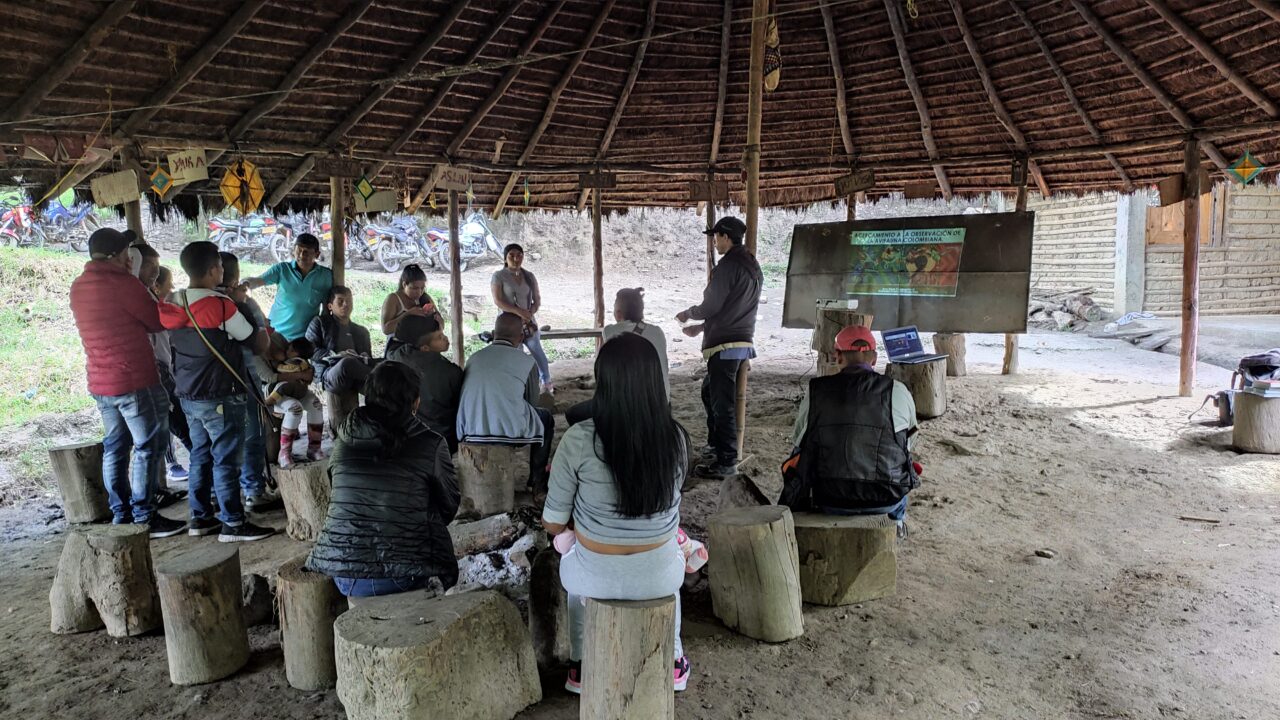
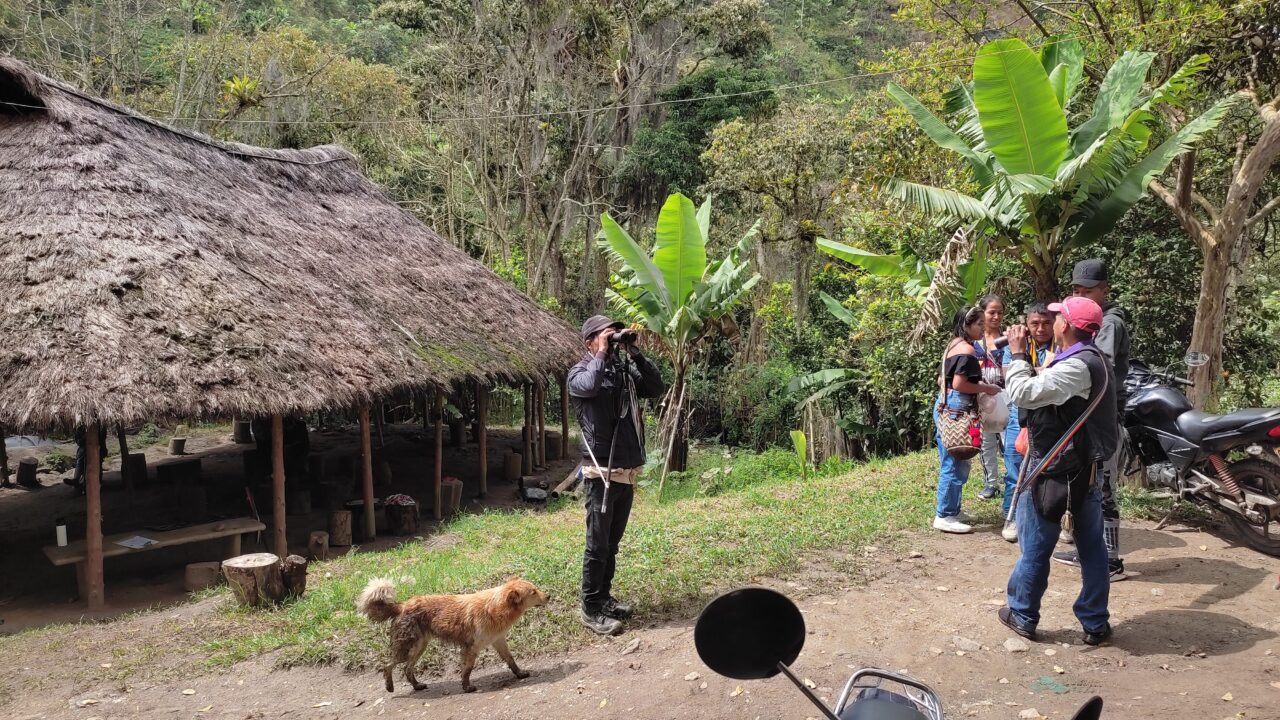
Second Meeting
he activities of the second meeting were carried out at the El Sesteadero Educational Institute. The elementary and middle school children enjoyed the Cornell Lab of Ornithology’s International Bird Detectives curriculum activities. The curriculum was adapted to the Nasa worldview about birdlife and nature, resulting in a unique and beautiful experience for participants and facilitators. The meeting focused on both the fun activities of the curriculum and in sharing knowledge about the conservation and protection of birds in the community. An incredible festival about birds and Nasa cultural knowledge was also held, with the slogan “Flying Through the Country”. The festival was held along a path that passes through the three indigenous reservations of the territory, with the objective of promoting the conservation and protection of birds in the entire territory. The festival was then taken to other schools in the territory. Young people and children toured on goats while displaying four decorated floats as a way of representing the Nasa knowledge of birds. This is such a great example of how birds unite us all!
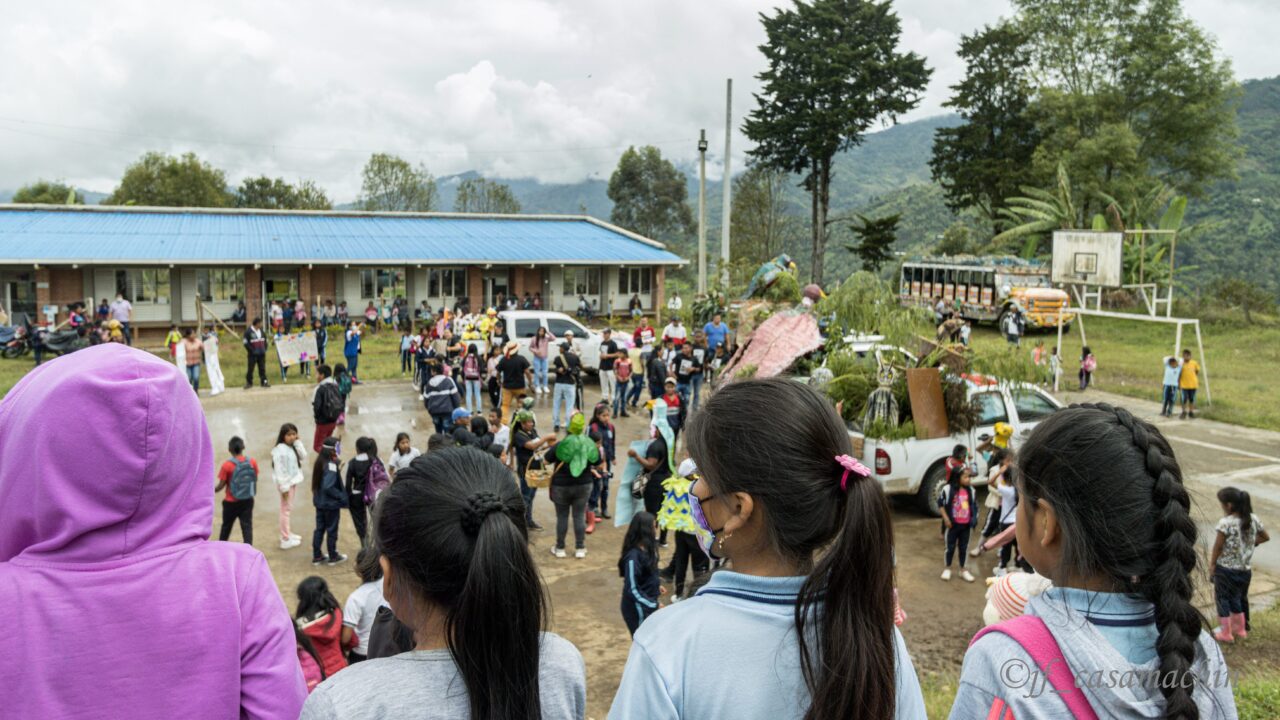
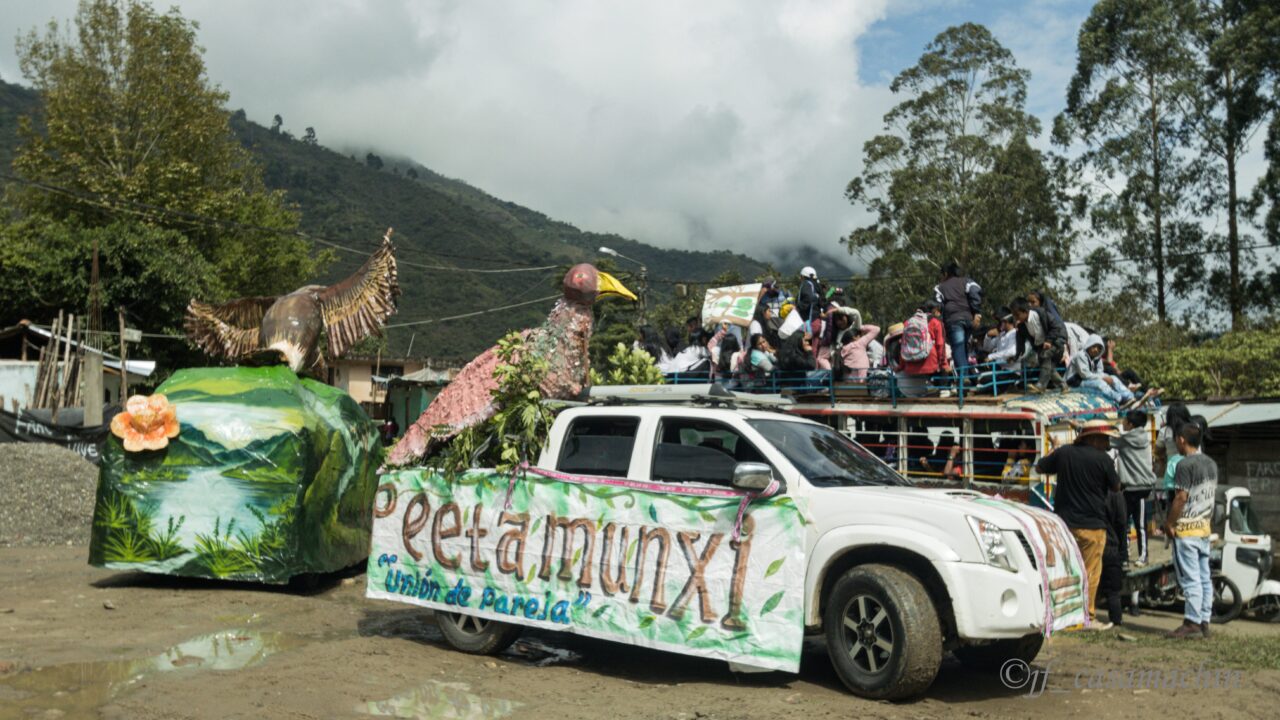
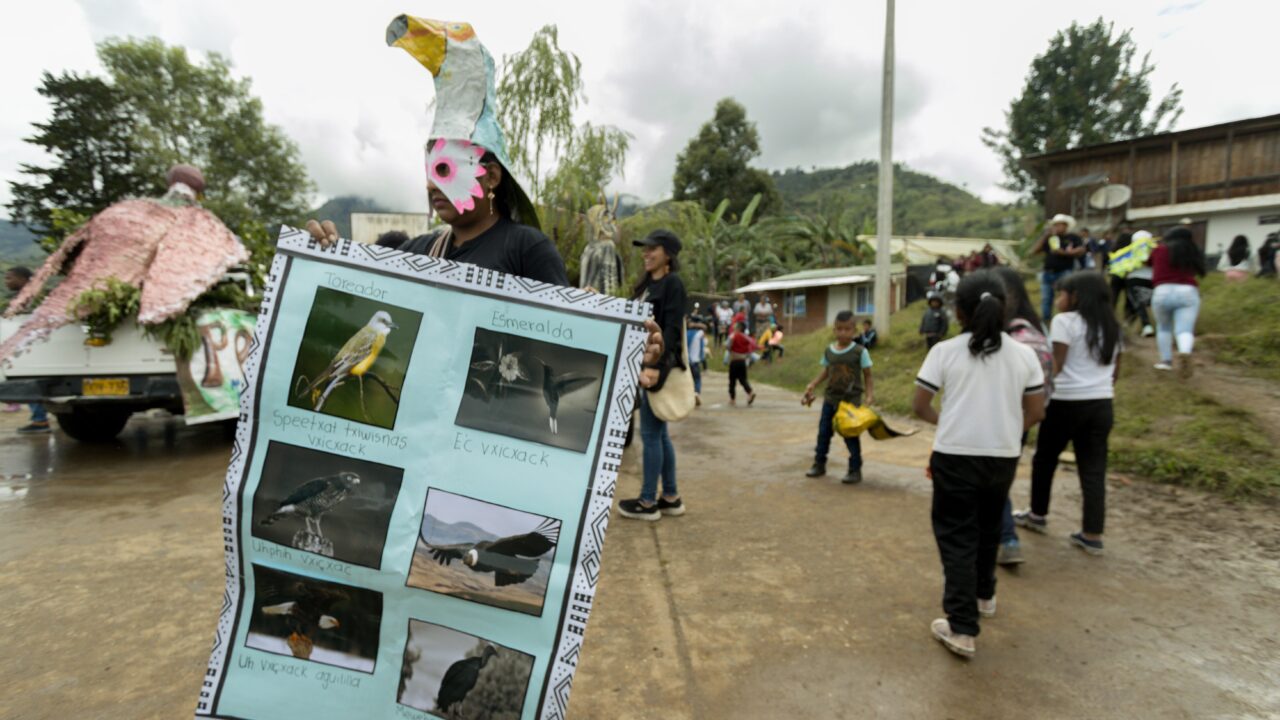
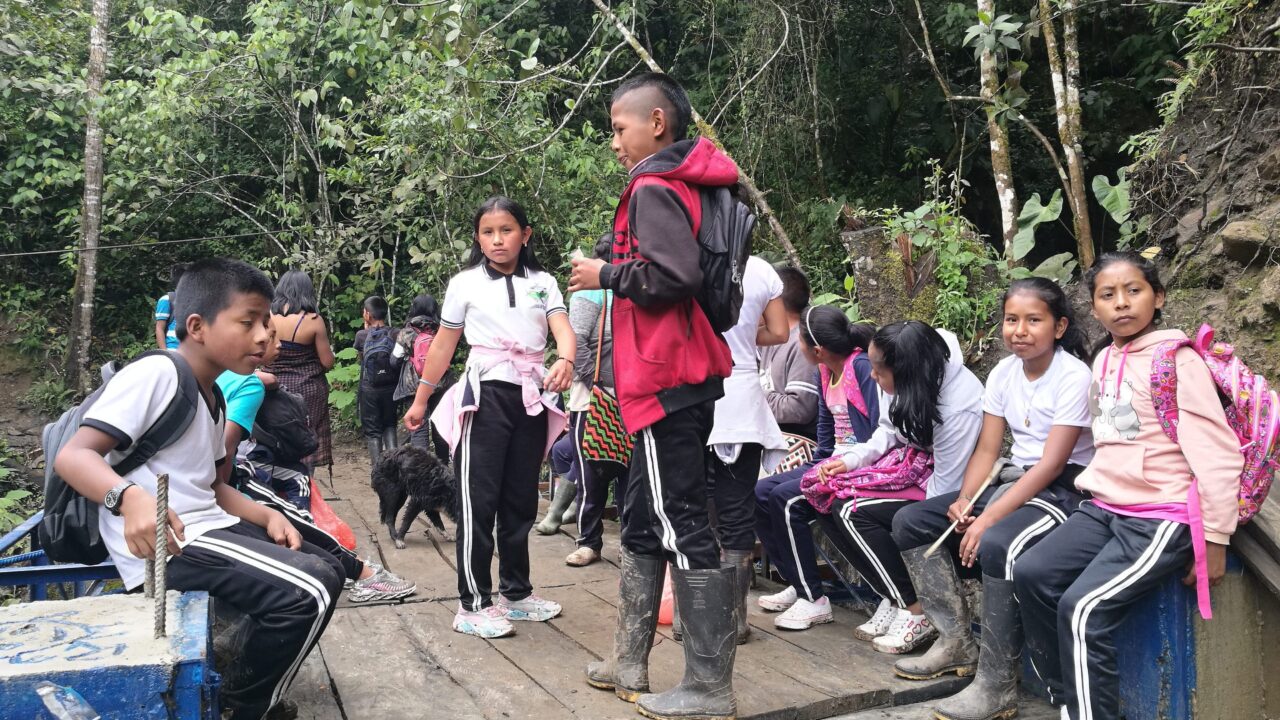
Third Meeting
The work with the schools continued. Next the educational workshops were held at a school in Betulia in the San Francisco Indigenous Reservation. At the conclusion of the educational activities, everyone went for a walk to identify birds. Once again, the Macaulay Library super tool was used to listen to and learn to identify the songs of local birds. The children, youth, and adults single-handedly identified 25 different bird songs, demonstrating their knowledge and familiarity with local species. Using the Macaulay Library they identified seven more species for a total of 32 bird species identified by sound in a single tour. This is an example of the amazing biodiversity present in this beautiful territory. Later, more educational activities were carried out about living with birds in the territory, and identification of the different habitats of the birds observed. The children had a lot of fun drawing the birds they heard, while the adults chatted about the Nasa bird diversity. Long live Nasa creativity and culture!
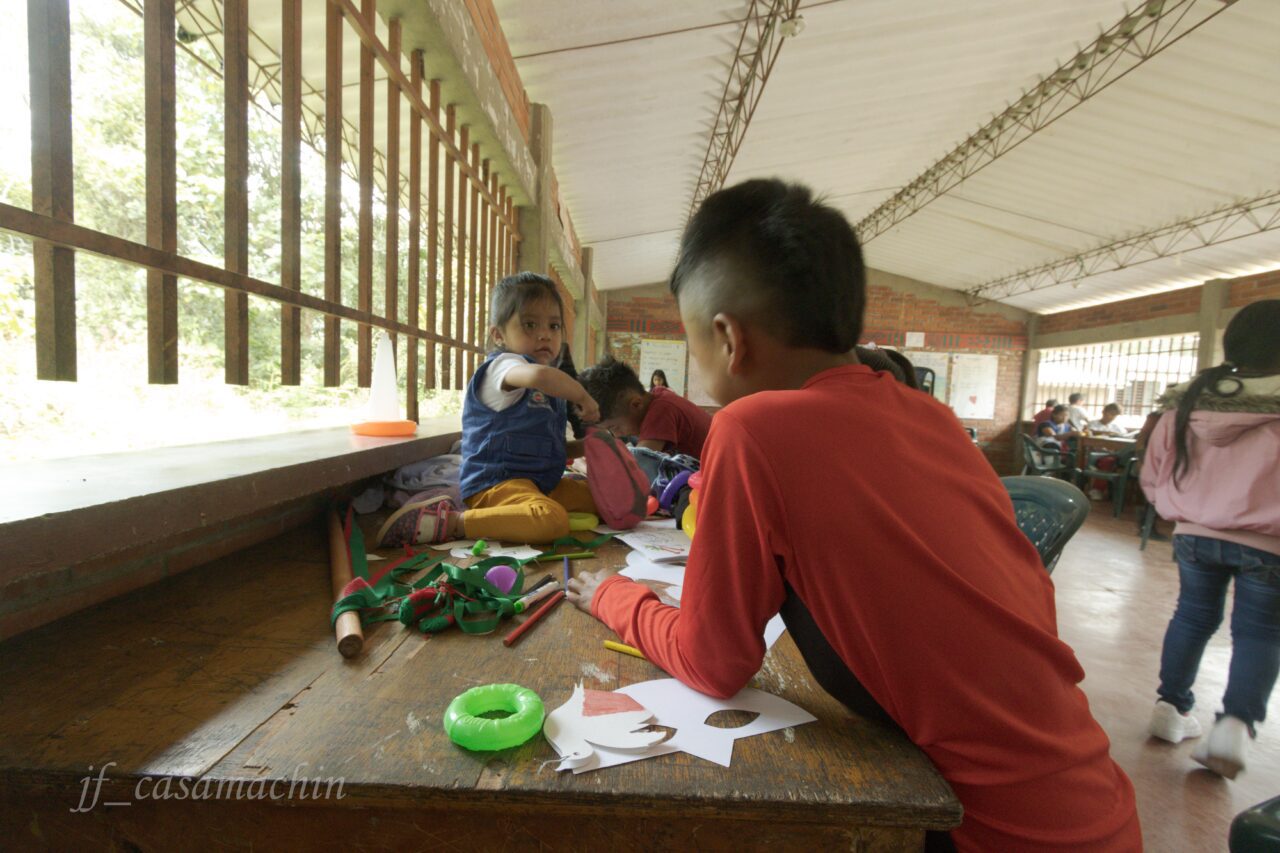
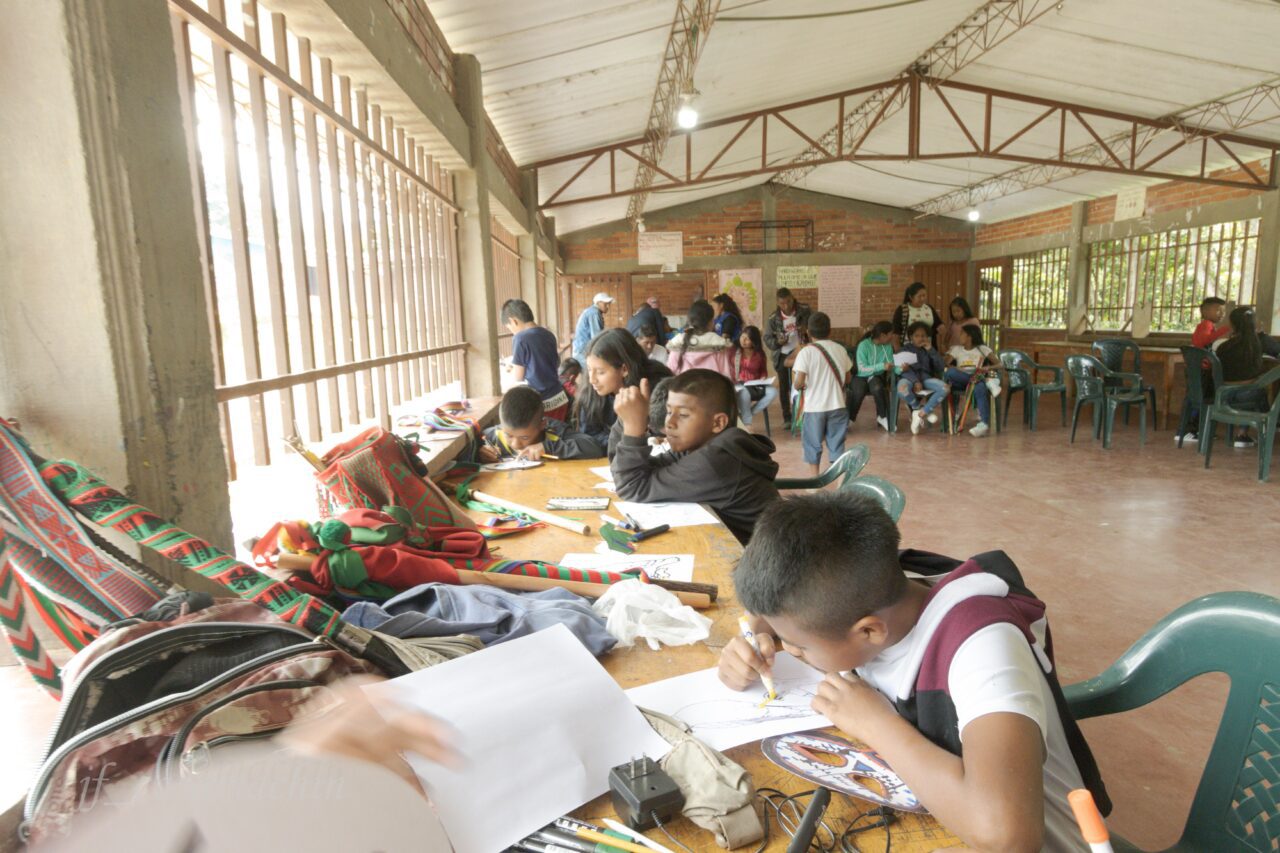
Fourth Meeting
To conclude the workshop a meeting was held with the village leaders of the Toribio Indigenous Council (Kha’buwesx). The Kha’buwesx are part of the indigenous council that represents each village, each village being a geographical division of the indigenous reservation. During the meeting the International Bird Detectives curriculum was used to supplement fun educational activities. The activities consisted of information and descriptions of local birds, as well as bird wildlife conservation projects. All the activities were carried out based on the Nasa worldview, making the event incredible for everyone. After the educational workshops had wrapped up, the group headed out on a group birdwatch! Throughout the birdwatch a total of 28 species of birds were identified. If you lived in Toribio you would truly feel the birds were infinite!
The Nasa community is incredible and unique thanks to its rich culture and connection to nature. Their resilience and perseverance as a community in the face of cultural and political turmoil in addition to the difficulties presented by the COVID-19 pandemic have been truly courageous and inspiring. Having a distinct cultural identity in the modern world is becoming more and more difficult. It is a beautiful thing and should be greatly applauded and respected. The educational workshops and birdwatching provided a fantastic opportunity for the Nasa community to unite around the importance of birds in their culture. These events provided moments of introspection and gratitude. Promoting bird educational activities that contain a blend of scientific information and ancestral tribal knowledge is the ideal path for education, protection, and conservation of bird wildlife in a community as special as the Nasa people of Toribio, Cauca.
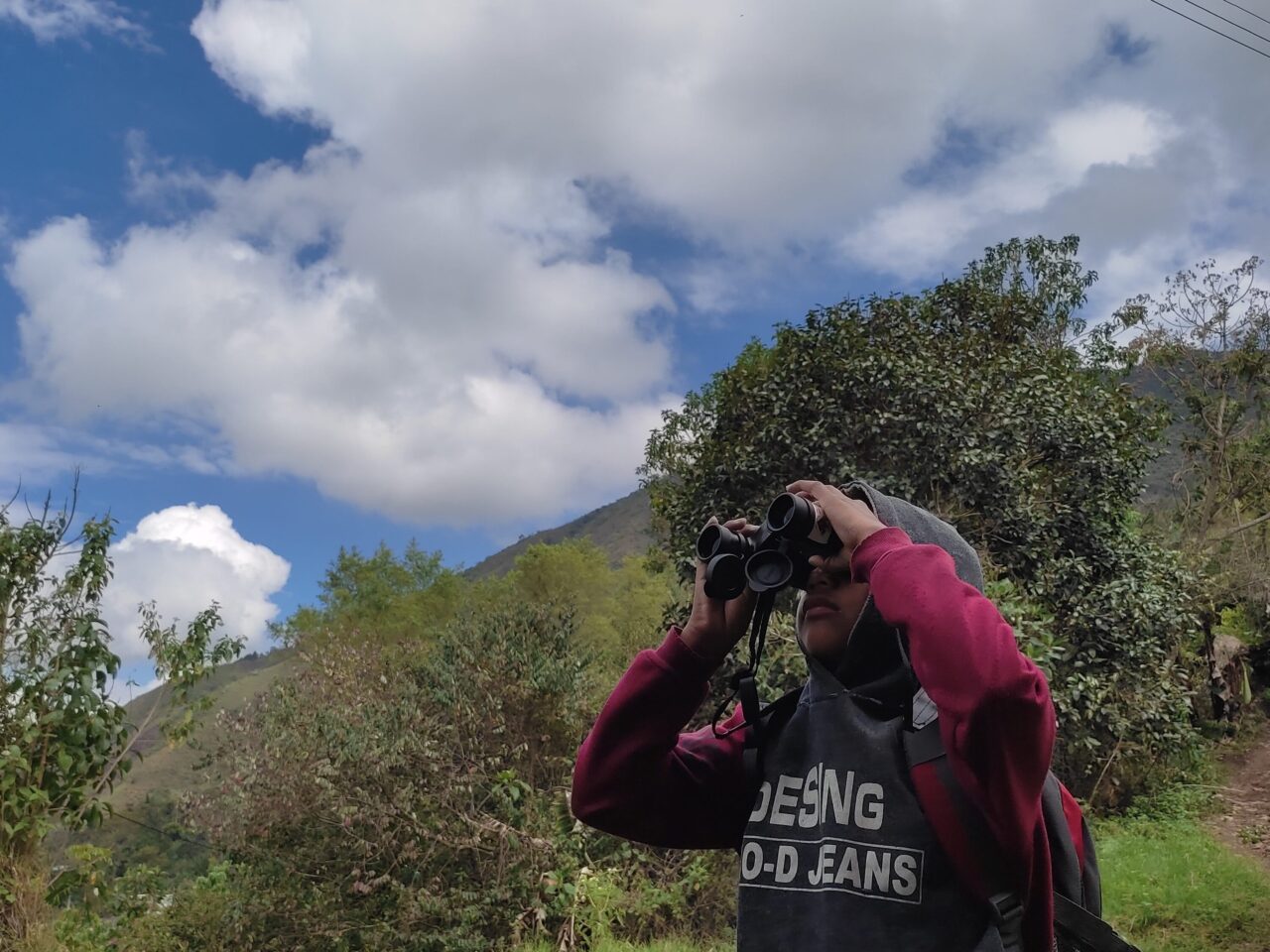
A big thanks to Jhon Fredy Casamachin UUI, the organizer of the activities, for his leadership and for facilitating the educational workshops and walks. In addition, a special thanks to the Nasa leaders of the indigenous reservations and the school teachers in the territory for sharing their wisdom and supporting educational activities from the Nasa worldview. The support provided by the educational materials and resources from the Cornell Lab of Ornithology is gratefully acknowledged. Finally, the Nasa people are thanked for their interest and collaboration in carrying out these workshops, which were a complete success.
Written by Diego Valle
